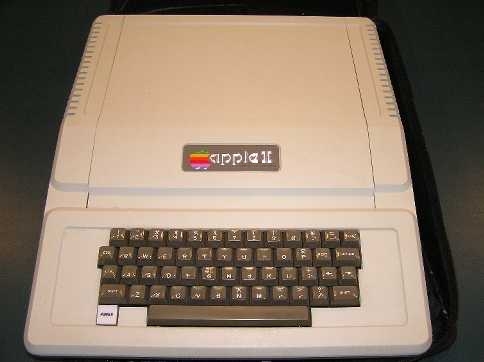





|
NAME |
APPLE II |
|
MANUFACTURER |
Apple |
|
TYPE |
Home Computer |
|
ORIGIN |
U.S.A. |
|
YEAR |
April 1977 |
|
END OF PRODUCTION |
1980 |
|
BUILT IN LANGUAGE |
Integer Basic |
|
KEYBOARD |
Full-stroke keyboard (upper case support only) |
|
CPU |
MOS 6502 |
|
SPEED |
1 MHz |
|
RAM |
4 KB (64 KB max) |
|
ROM |
12 KB (Monitor, Integer Basic, "Sweet 16" mini-assembler) |
|
TEXT MODES |
40 x 24, 80 x 24 (with 80-column card) |
|
GRAPHIC MODES |
40 x 40-48 (16 colors), 280 x 192 (4 colors) |
|
COLORS |
16 |
|
SOUND |
One channel beeper |
|
SIZE / WEIGHT |
39.2 (W) x 45.4 (D) x 11.8 (H) cm |
|
I/O PORTS |
Composite monitor, Internal Slots (8), Tape recorder In/Out jacks |
|
POWER SUPPLY |
Built-in switching power supply unit |
|
PERIPHERALS |
All Apple and third-parties cards and peripherals |
|
PRICE |
$1298 (1978, USA) |
|
Apple II
|
|
|
|
Apple II came with 4 KB RAM, but it was possible to add 4 KB or 16 KB RAM chips. Thus, the system could have
memory in the following sizes: 4K, 8K, 12K,16K, 20K, 24K, 32K, 36K, or a full 48K. This was one of the strong points
of the Apple II: from the beginning, it was designed with expansion in mind. The 8 expansion slots were further proof
of that - users could expand their system easily, just by plugging cards into the slots.
The ROM included the monitor, a 6502 disassembler, 'Sweet 16' a 16-bit CPU emulator and the Integer Basic written
by Wozniak in machine language, assembled by hand on paper! Not having to load a language from tape or disk to start
programing was also a significant advantage over competitors. Even the innovative plastic case proved to be an
important feature to attract customers.
Just a few months after the Apple II presentation at the First West Coast Computer Fair in April 1977, Apple received
about three hundred orders for the Apple II, over a hundred more than the total number of Apple 1's
sold.
Apple II was followed in 1979 by the Apple II+, which brought some enhancements.
|
